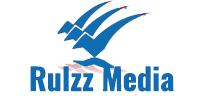With the increasing levels of threats towards our health nowadays, the costs required to provide the necessary care seem to be skyrocketing as well. One key area that has had a direct effect on the healthcare costs is non-other than the costs required for treating chronic wounds. Occurring due to various conditions like trauma, diabetes, immobilization for long periods, diseases related to blood vessels, etc., wounds that are in a chronic state, tend to be very painful for a patient as they usually take more time to heal than normal wounds. As this also leads to wounds being open to bacteria in the environment for a longer time periods, specialized care will be required in order to find relief in these sort of situations and the cost for these treatments can be very high too. A proven mode of therapy that is contradictory to thishigh costisknown as ‘NPWT’ (Negative Pressure Wound Therapy)andit is known to be quite effective in the process of healing chronic wounds.
Functionality of the Therapy
The potential for NPWT in reducing healthcare costs is high as it is known to be very efficient in aiding exudate removal, maintaining fluid balance, slough removal, establishing a moist environment, bacterial infection prevention, etc. in wounds. The negative pressure that is applied in this treatment is also known to help in bonding tissues in the wounds that can excel the healing process as well. All these advantages make it an ideal solution for patients who are suffering from chronic/acute wounds to reduce their hospital treatment duration thus saving healthcare costs in a huge way.
NPWT Equipment
The successfulness of NPWT also depends on the efficient equipment used for it and the likes of ‘EZCare vacuum system’, ‘V.A.C. systems’ and the portable ‘Pico system’ are some of the more commonly used ones for this therapy. Being able to provide a faster rate of healing in different conditions like second or third degree burns, diabetic /trauma wounds and even various types of ulcers has allowed negative pressure therapy to be a good alternative to the more traditional wound therapy systemsand the reduction of the dressing change rates has also helped this process to decrease costs.
Conditions that Might not Benefit from NPWT
Even though negative pressure therapy can be an ideal solution for providing relief in an accelerated fashion for many who are suffering from wounds, there are some instances where this might not be the case.Since NPWT usually involves topical application of negative pressure on the bed of a wound, it might not be suitable for conditions where a wound might have bones, organs, tendons or blood vessels in an overly-exposed state. Also if the bleeding in a wound is still active, then it is best to use this therapy with the proper guidance of a medical practitioner so that complications can be avoided.
The necessary improvements and proper use of this therapy will not only allow patients who are suffering from chronic wounds to enhance the quality of their lives but it will also assist in making excessive costs being needed for wound therapy, a thing of the past for sure.













